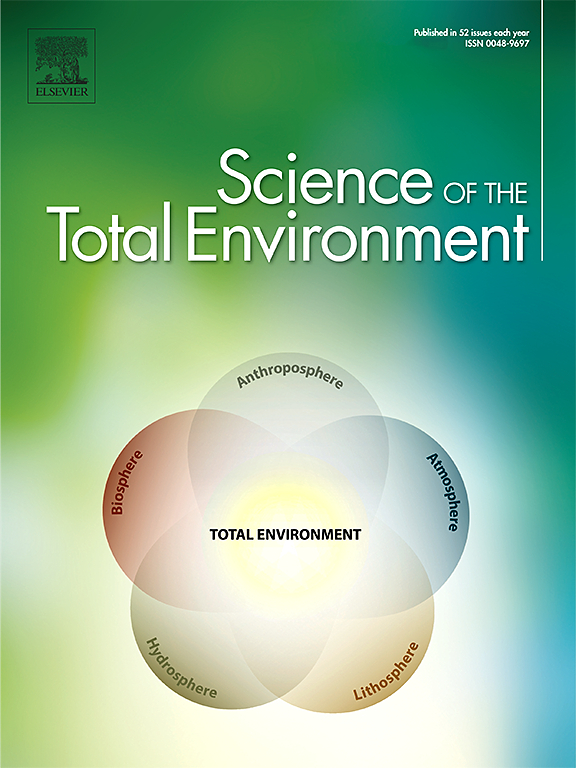Nitrate contamination in groundwater across Switzerland: Spatial prediction and data-driven assessment of anthropogenic and environmental drivers
IF 8.2
1区 环境科学与生态学
Q1 ENVIRONMENTAL SCIENCES
引用次数: 0
Abstract
Excessive nitrate in groundwater, which is primarily caused by anthropogenic activities, is a worldwide problem. Consequently, Goal 6 of the UN Sustainable Development Goals lists nitrate as one of the key indicators of groundwater quality. However, in most countries, the nationwide occurrence of nitrate is unknown, as the monitoring networks only represent small points in space. To bridge this gap, machine learning modelling that predicts nitrate concentrations at a high spatial resolution is a promising tool to identify high-risk areas. Here, we use random forest machine learning to predict nitrate concentrations across Switzerland based on 1336 monitoring sites. The model revealed that approximately 35 % of the Swiss Plateau, Switzerland's most populous region, has a high probability of exceeding the Swiss guideline value of 25 mg/l for groundwater nitrate. We also investigated the individual importance and influence of anthropogenic and environmental variables associated with high nitrate concentrations by combining SHapley Additive exPlanations with expert knowledge of physical and geochemical processes. In addition to well-known influences of anthropogenic features (e.g. land use), we found that other environmental features including high springtime precipitation, low summertime precipitation, low soil organic carbon content, low river density and greater distance to large rivers, were indicative of high nitrate concentrations. These features directly relate to large-scale nitrate transport and attenuation processes (denitrification and dilution), but have received sparse attention in nitrate risk assessment and mitigation measures. Therefore, the approach and results of our study can be useful for nitrate studies around the world.

求助全文
约1分钟内获得全文
求助全文
来源期刊

Science of the Total Environment
环境科学-环境科学
CiteScore
17.60
自引率
10.20%
发文量
8726
审稿时长
2.4 months
期刊介绍:
The Science of the Total Environment is an international journal dedicated to scientific research on the environment and its interaction with humanity. It covers a wide range of disciplines and seeks to publish innovative, hypothesis-driven, and impactful research that explores the entire environment, including the atmosphere, lithosphere, hydrosphere, biosphere, and anthroposphere.
The journal's updated Aims & Scope emphasizes the importance of interdisciplinary environmental research with broad impact. Priority is given to studies that advance fundamental understanding and explore the interconnectedness of multiple environmental spheres. Field studies are preferred, while laboratory experiments must demonstrate significant methodological advancements or mechanistic insights with direct relevance to the environment.
 求助内容:
求助内容: 应助结果提醒方式:
应助结果提醒方式:


